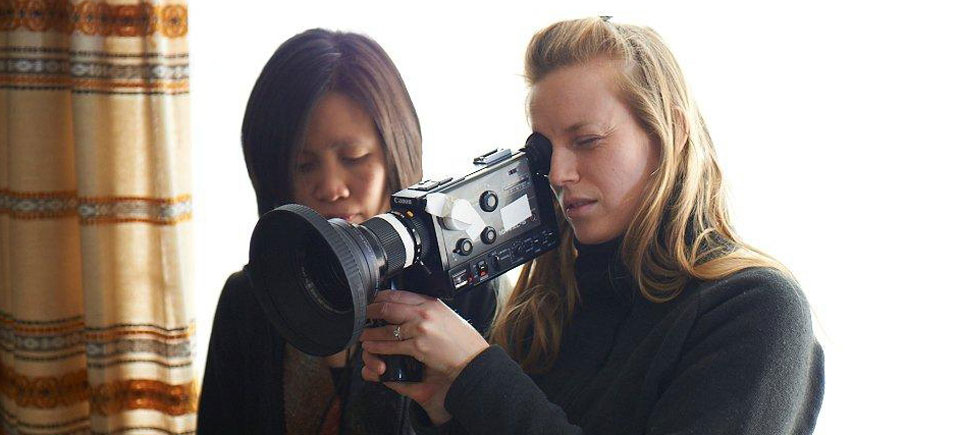A working definition of the “producer” title
“What is the difference between all the different variety of producer credits?”
(Note: This post applies only to the feature film industry in the private sector. For clarity, I’ve included the definitions we use at the NFB at the end.)
I loved this question, mainly because it was one of the first ones I had when I started working in film. For me, it was a matter of survival – who did I need to get coffee for and who could I tell to take a hike? But when you’re watching a film and see an endless stream of producer credits roll by, you have to wonder what the heck everyone is doing to get an above-the-line mention.
In a nice moment of symmetry, I turned to my first real producer, Tom Berry, to answer this question. When I asked him what a producer does, he instantly replied, “When you figure that out, please explain it to my family.” His answer was pretty indicative of all the confusion surrounding the topic. And he stressed that while it’s possible to summarize what the term is supposed to mean, one should always keep in mind that when egos are involved and trade-offs are made, it’s sometimes difficult to distinguish what work was actually done based solely on the credit a person receives.
Before he would answer my question, Tom was sure to point out two things:
- Producing is a team sport.
- The producing credit is much desired and thrown around with wild abandon.
Both points make a lot of sense. People with a lot of experience and clout want the best credits, and they usually get them. And even if those people haven’t done the bulk of the work, it’s not necessarily a bad idea to happily give them the credit. It is advantageous to market your product by saying, “From the producer of….” Face it – a known entity with a proven track record carries a lot of weight in this industry.
Executive Producer: This is the person who raises the financing. As the person bringing money to the project, they usually have a lot of control over it.
Producer: This is the person who plays the principle creative and entrepreneurial role in putting a film together. The producer develops the idea and assembles the key creative elements needed to realize the project. To be a good producer, you need to be both creative and business-minded. (Don’t worry, I’ve got a whole post on producing coming up).
Associate Producer: Quite literally, someone who associates with the producer. This is often a courtesy credit, but that doesn’t mean the person hasn’t made a valuable contribution to the project.
Co-Producer: The lesser partner of the actual producer. Someone with less authority than the key creative producer, but who still functions in a producer capacity (updated 07/03/09). This is actually a rare credit in the US studio world.
Line Producer: This is the most concrete of all producer credits, the most precisely defined and most rarely abused. No one wants this credit unless they’ve actually done the job. The line producer takes care of the day-to-day necessities of physical production. All the hiring, budgeting, union issues and more go through the line producer. This is the person who organizes and controls the entire production and acts as liaison between the crew and the higher-level producers. Line producers are also sometimes known as Executives in Charge of Production.
Supervising Producer: This is someone who has some sort of creative authority. A nice vague title.
Here at the NFB, we generally give only two types of credits: Executive Producer and Producer.
Without the need to go out and find financing, an Executive Producer is the person who oversees the management of their studio or production centre. This involves responsibilities such as signing off on other producers’ projects, being involved in industry relations and outreach in their community, building relationships with filmmakers in their territory and playing an ambassador-like role in their region. They are also responsible for implementing the overall programming direction for their studio in accordance with the strategic plan.
In smaller studios, the executive producer will also be a hands-on producer, taking on projects of their own in addition to overseeing other projects.
An NFB producer is the one who develops and puts projects together. They work in much the same way as any other creative producer would in the private sector.
When we do a co-production, which accounts for roughly 60% of our projects, we will have co-producers who are, in effect, the independent producers in the private sector that we are working with on that particular project.
In some instances, we have associate producer trainees who work with us as part of a mentoring program. These people account for our associate producer credits.
***
Over the next couple of posts, we’ll delve a little deeper into the world of producing and directing. But by all means, keep those questions coming…




The French Program of the NFB continues to have one or two line producers, or as titled in French, “productrice(eur) déléguée”. In the French animation studio, for instance.
Great job on the descriptions!